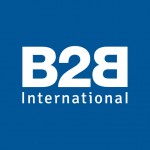The two disciplines of b2b and b2c market research, though employing many of the same research tools and techniques, both have very differing requirements, traits and skillsets. In this short article, we outline some of the core differences between b2b research and b2c research:
A Different Skillset
B2b market research requires a different skillset at every level of responsibility – from research director to telephone interviewer. Indeed, one of the key areas of success to many b2b research projects is the skillset and expertise of the telephone interviewer. Telephone interviewers are faced with a diverse range of challenges when working on a b2b research project:
- Working from finite sample lists (meaning each contact has to be treated with the utmost care)
- Respondents can be anyone from the owner of a new start-up business to a board member of a blue chip corporation – therefore interviewers have to be able to build rapport with, and gain the co-operation of, very time-pressed and senior individuals
- Having to elicit very detailed information from respondents, often on specialist topics – thus requiring the interviewer to become an expert themselves on a given topic area at the start of a project.
Sample Size
In the vast majority of cases, sample sizes are smaller for b2b research – often limited by the overall available sample. There are, for example, only so many Technical Directors of Fortune 500 companies in the world.
Due to the smaller sample sizes in b2b research it is also less common to weight a dataset to ensure it is representative to an overall sample. This is usually due to the total number of completed interviews not being large enough for weighting to be effective.
Geographical Spread of Respondents
In b2b market research, target respondents are often sparsely spread around the country (or globe), which means it can often be impossible to conduct face-to-face focus groups. With this in mind, online groups can be particularly useful. Indeed, online focus groups in a bulletin-board set-up can work well, as they allow business respondents to log into a group whenever convenient across an allotted time period – regardless of where they are in the world.
The Importance Of The Tele-Depth Interview
The telephone is the tool of business – so tele-depth interviews often work better than face-to-face depth interviews, which can be very costly (especially when wide geographical spreads are taken into account). More often than not, tele-depth interviews can be far more focused than f2f interviews in terms of the data that is gathered in an allotted time period.
Addressing A Strategic Need
B2b market research more often addresses a strategic business need when compared to most b2c research projects. This erring toward strategic research is usually a symptom of the fact that many b2b research projects are driven at boardroom level, both in terms of identifying a need for research, but also in terms of actioning the research recommendations.
Research Methods Employed
Many consumer research projects focus on a specific methodological approach or research technique (e.g. only qual vs. only quant, or online communities vs. eye-tracking). This, in turn, means that there are many b2c market research agencies that focus on a particular methodological approach or technique. In b2b research, objectives are often wide-reaching and require an agency to use a number of different tools and methodological approaches to address the objective. For example, a project may start with a strategic workshop, followed by qualitative depth interviews and focus groups, followed by a large online survey, and depth interviews with key customers.
This, of course, means that b2b agencies have to be skilled in a number of different research disciplines, and adept at compiling the optimal research approach and toolkit to answer each unique research problem. Indeed, many b2b research agencies classify themselves as ‘method neutral’.
The Pareto Principle
The Pareto principle is something that factors into b2b research more so than b2c research – certainly when conducting customer research (with 20% of customers accounting for 80% of revenue). When sampling for a piece of customer research we have to be very aware that in most cases a small number of customers make up a large portion of revenue, and therefore need to be treated differently to the main body of the sample. In some cases this may mean doing depth interviews with key accounts, while the main body of customers is researched through an online survey.
The Complexity Of The Decision Making Process
One of the differences between b2b and b2c research is the complexity of the decision making processes in a business-to-business environment. With consumers, decisions can often be far more straightforward than in the business world – for one thing, they usually only involve one party. In the b2b world, decision making processes have to be understood from a number of different angles, including:
- The different parties involved in the process
- The level of influence of each party
- The input or role in the decision making process of each party (e.g. finance, technical, etc.)
- The internal and external influencing forces
- The hierarchy of needs, and drivers.
Designing a piece of research that recognizes and acknowledges these complex decision making processes is one of the core skills of a b2b researcher.
Conclusion
There are indeed many more differences between business research and consumer research, and a plethora of subtle nuances that would take some time to list here – but hopefully this article serves as an outline to the core differences.


